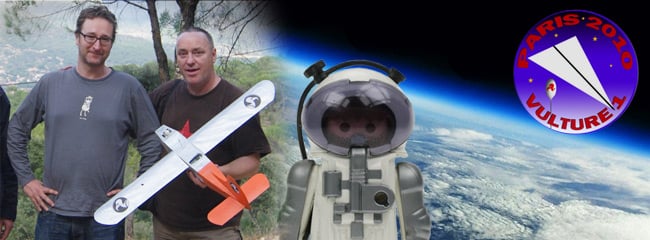Original URL: https://www.theregister.com/2012/12/04/spears_flight/
Hero Playmonaut lost at sea as SPEARS ditches in Channel
MYSTERY of balloon's unpredictable strato-lunge
Posted in Science, 4th December 2012 09:26 GMT
It's with heavy hearts that we report the loss of the Special Project Bureau's heroic playmonaut, after the Low Orbit Helium Assisted Navigator (LOHAN) balloon launch on Saturday ended in the English Channel off the coast of Sussex.
 The flight was intended to test the Special Project Electronic Altitude Release System (SPEARS) control board at altitude - specifically to see if it would fire the igniter for our Vulture 2 rocket motor at a predetermined height.
The flight was intended to test the Special Project Electronic Altitude Release System (SPEARS) control board at altitude - specifically to see if it would fire the igniter for our Vulture 2 rocket motor at a predetermined height.
Despite a favourable flight path prediction, which had the payload landing well inland to the south of the Berkshire launch site, a dramatic change in wind direction carried it over Worthing for a splashdown some 8km offshore.
Readers should rest assured that we did everything possible to rescue our intrepid pilot and the payload - as you'll see later - but sadly it appears both have succumbed to the salty seas.
Before we get down to to details, let's hear it for Anthony Stirk, Dave Akerman and Neil Barnes (seen left to right, below) who were up bright and early on a very nippy Saturday morning to send SPEARS to the stratosphere.
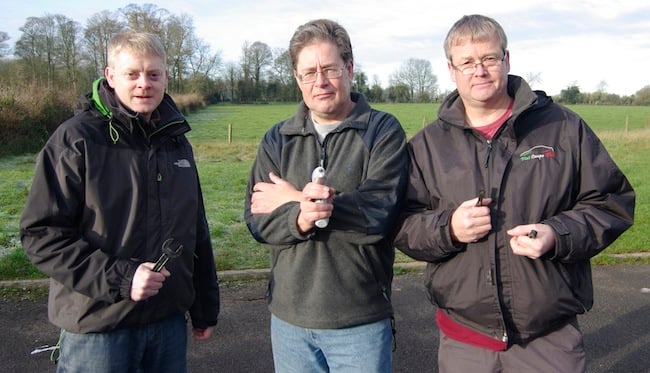
The night before the launch, we assembled to put together the payload (details here) at Dave's NASA-style mission control complex. Here's the man himself posing in front of a mighty bank of monitors...
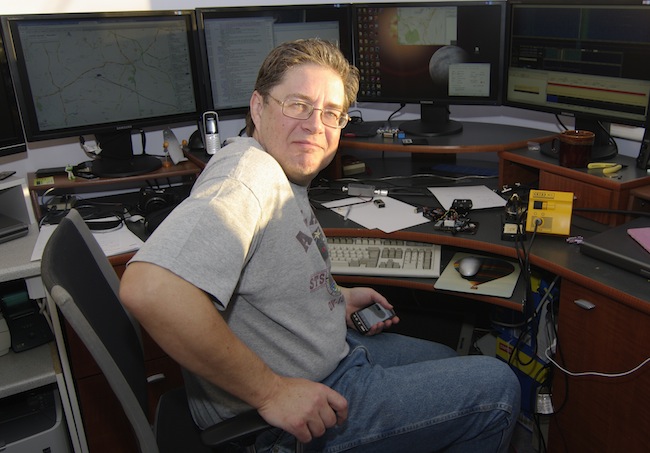
..as Anthony contemplated an altogether more modest set of displays:
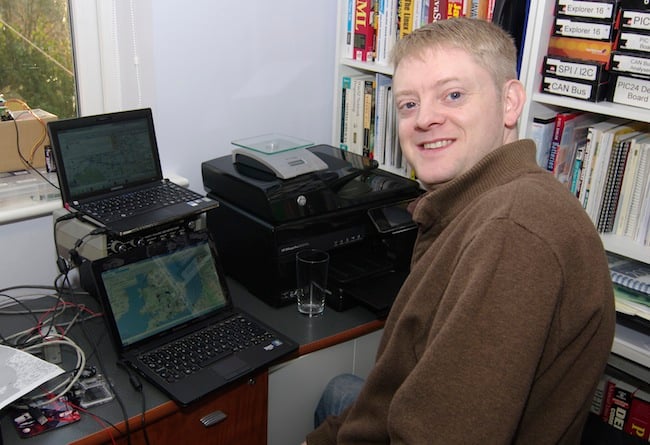
Neil, meanwhile, tackled some final programming of the SPEARS board:
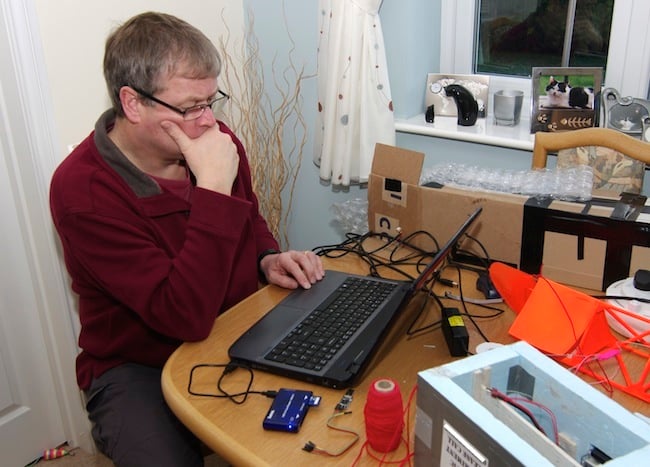
For the purpose of the test, SPEARS was set up to fire the igniter at 23,000m (79,459ft), well below the predicted balloon burst altitude of 27,000m (88,580ft).
Dave's calculations, based on an "absolutely ridiculous" payload weight of 1,900g and a target ascent rate of 6.6 m/s, meant we'd need to fill a 1,000g balloon with 5.4m3 of hydrogen to create a "neck lift" of 5kg.
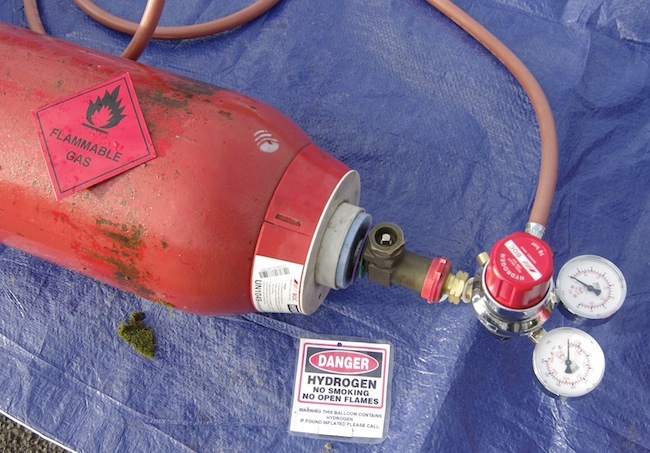
Down at the launch site, we took a moment to grab a pic especially for the Reg readers' Hindenburg fan club...
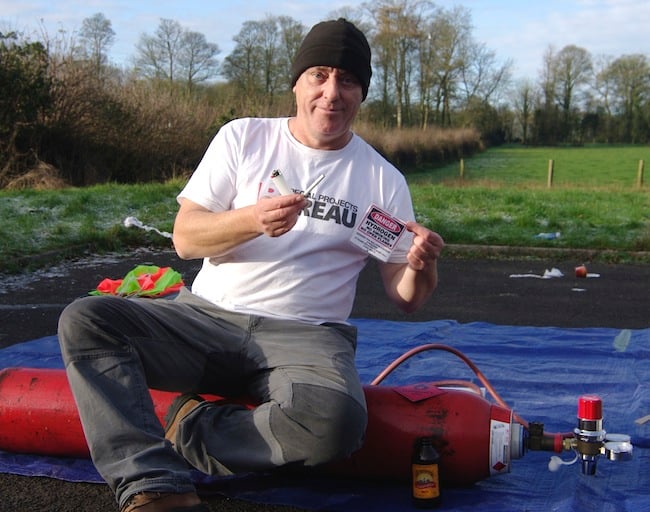
...before Neil brought forth the payload:
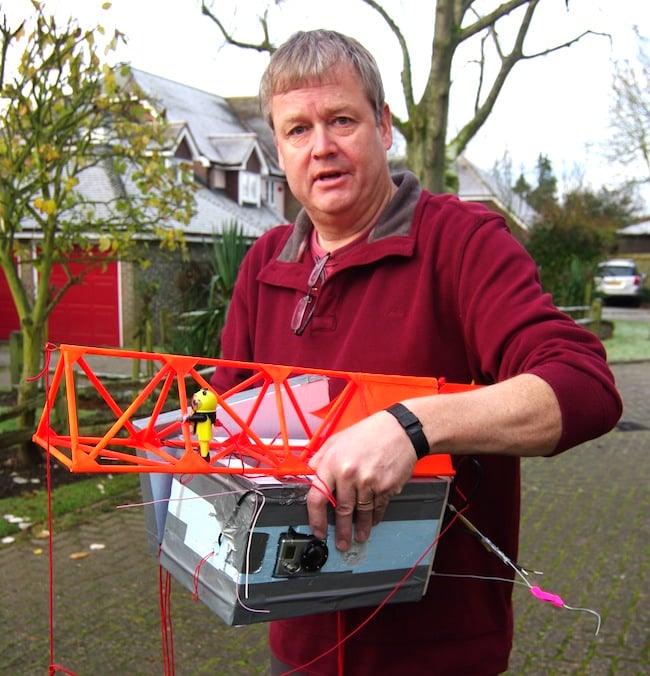
Our playmonaut opted to ride the truss, as you can see, although we did insist he be tethered to the structure with a safety line.
In addition to the truss and the box containing SPEARS, we also had a separate enclosure for the Iridium satellite comms module, seen here at bottom right:
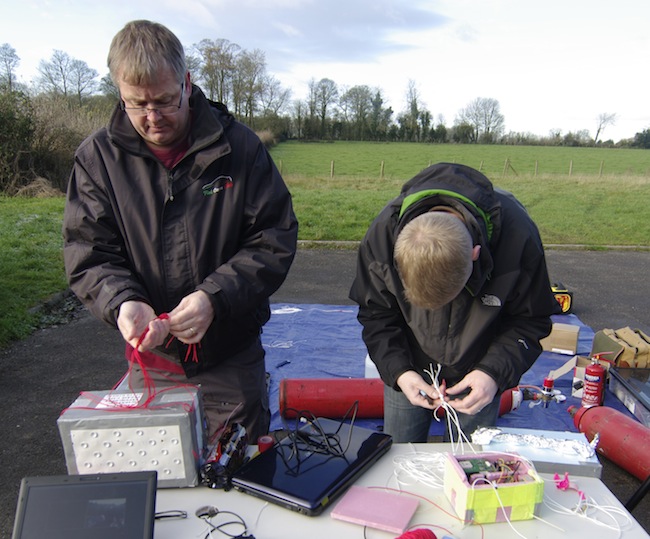
The SPEARS board does have an interface for eventual hook-up to the Iridium, but that connection wasn't a priority for this mission. As previously noted, our sexy little black number was tasked with firing the igniter, via a rack of eight 1.5V batteries. The battery holder for these is next to the board, while the second, smaller battery holder on the top of the box is for SPEARS' own independent 6V supply:
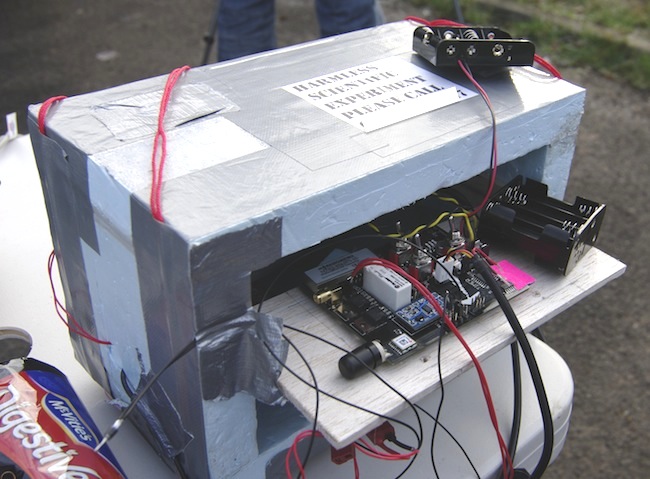
After around 30 minutes of prep, and with the SPEARS safety switch system functioning correctly, we could wire up the igniter, suspended in a wire cradle under the payload box:
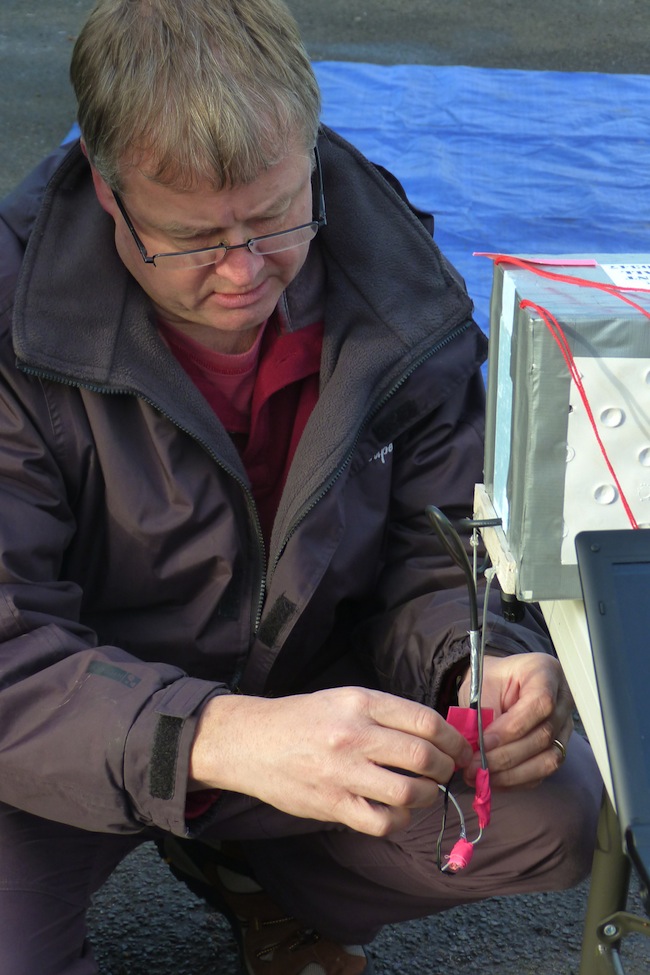
This operation is perfectly safe, although for some reason Dave decided that it would be better to photograph the action while walking backwards from the potential blast zone:
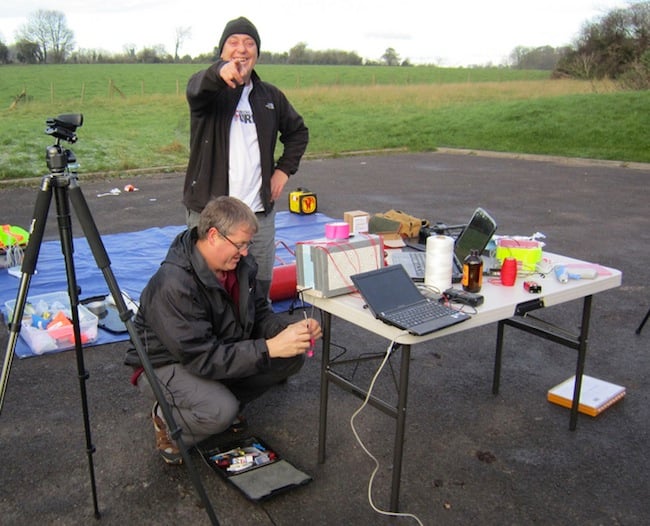
With the igniter good to go, here's how SPEARS looked just prior to launch:
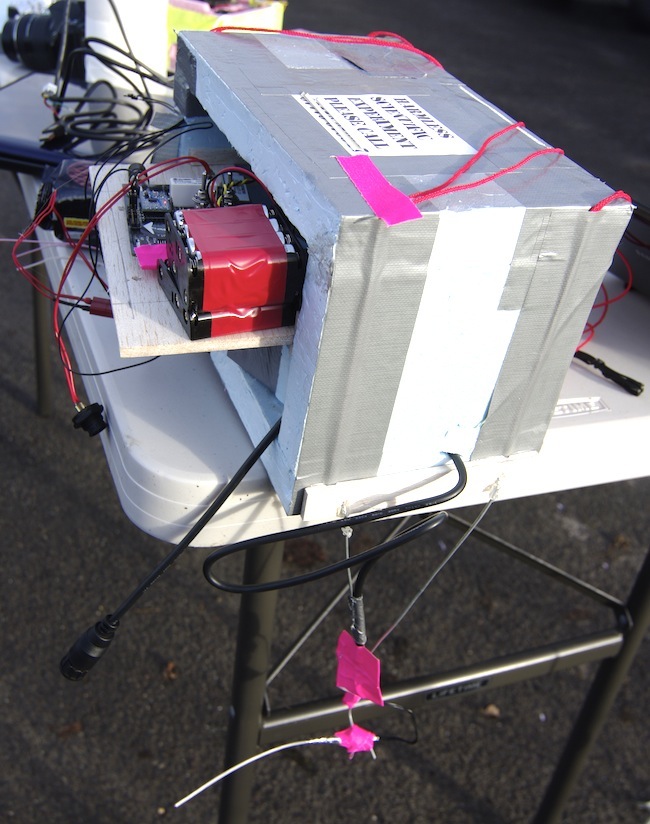
Cue Anthony Stirk to prepare for the balloon fill...
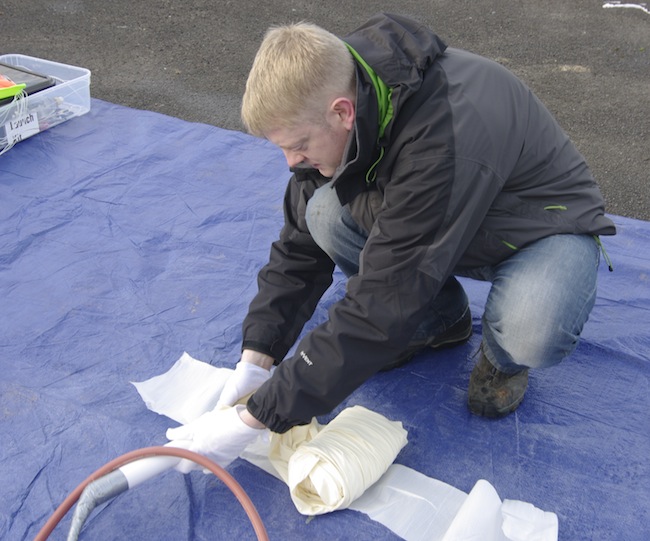
...and Dave to man the hydrogen valve:
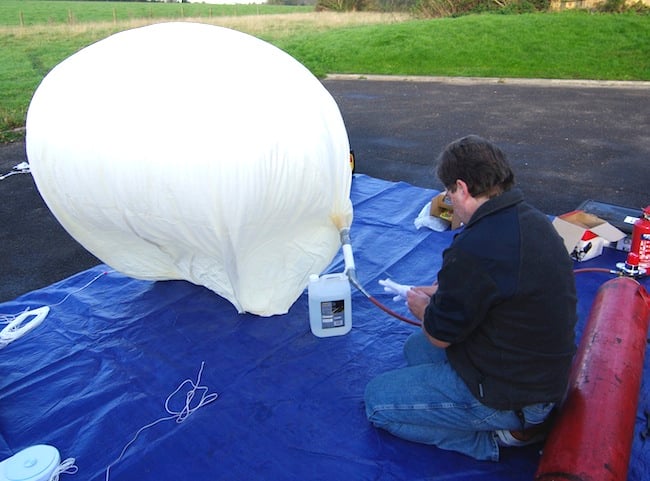
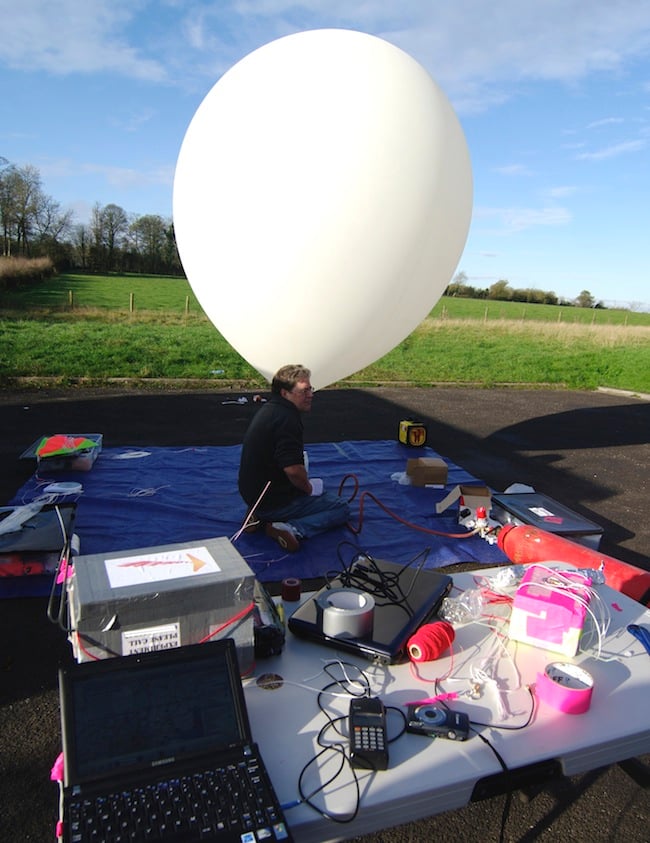
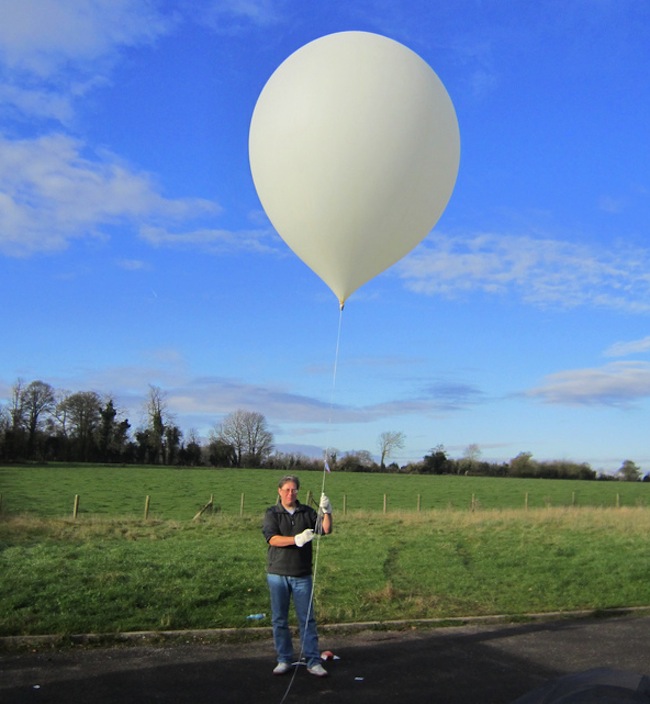
For your viewing pleasure, Dave's wife Julie grabbed this vid of the launch:
The estimated flight and descent times were 70 and 30 minutes, respectively, so we had to get a shift on to get ourselves somewhere near the projected landing site.
In the end, we'd have needed an amphibious vehicle to get to the actual spot where the LOHAN flight touched down, as seen on the map below, with the flight path plotted against the projected route. Balloon burst occurred at a tad over the estimated 70,000m, so we were spot on the money there. The wind, though, carried SPEARS way off course en route to an intimate encounter with the sea.
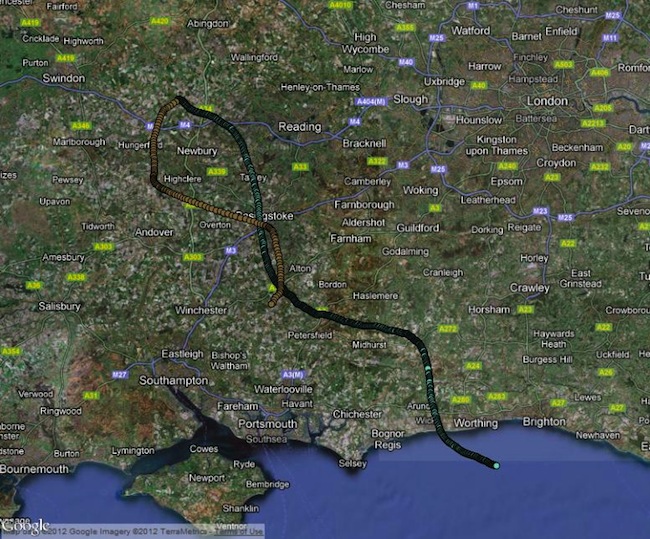
Ta very much to Reg reader "Astrodog" for putting the map together. Just why we ended up so far off track has caused a bit of head-scratching, and according to Anthony, "the underlying data from NOAA (National Oceanic and Atmospheric Administration) that we use just wasn't accurate for that particular time and day which is unusual".
Whatever the reason, the story might have ended there, with us staring glumly out to sea from the Sussex coast, but we knew readers would never forgive us if we didn't make a maximum effort to save the day.
Armed with the splashdown co-ordinates of 50° 43' 35.8644" : 0° 18' 8.4564", we did what any of you would have done in the circumstances, and rushed along the coast to Shoreham in search of a vessel.
It's fair to say that Karl O'Keefe and David Doutre of the good ship Even-Flow have the Right Stuff for a place in LOHAN history. Recovering from their initial surprise at a bunch of complete strangers turning up with a request for urgent transportation into the Channel, and unfazed by the failing light, the pair agreed to venture forth in pursuit of SPEARS and our playmonaut.
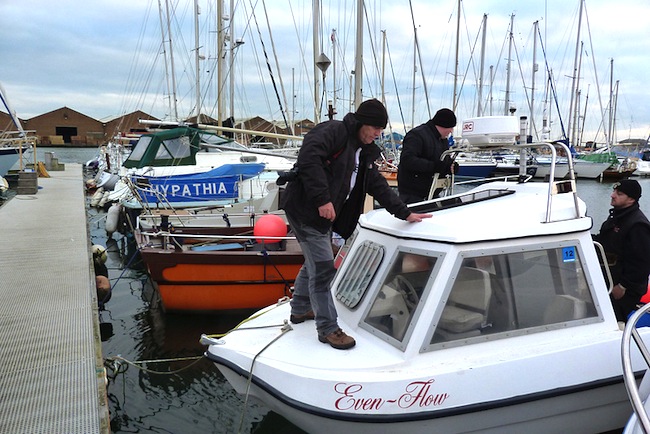
Neil gamely signed up to accompany me on the quest, and around two hours after SPEARS hit the water at 1pm, we cast off:
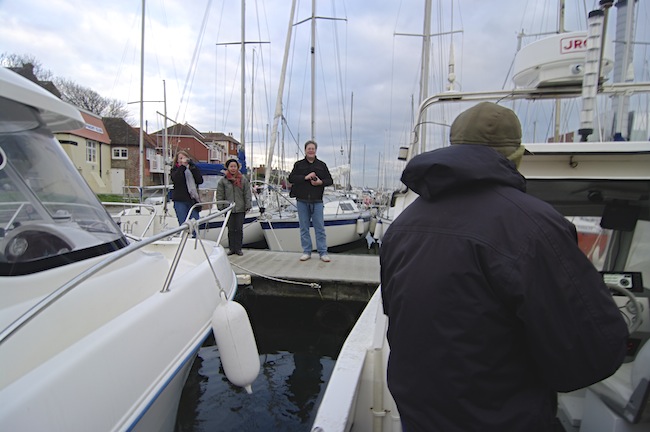
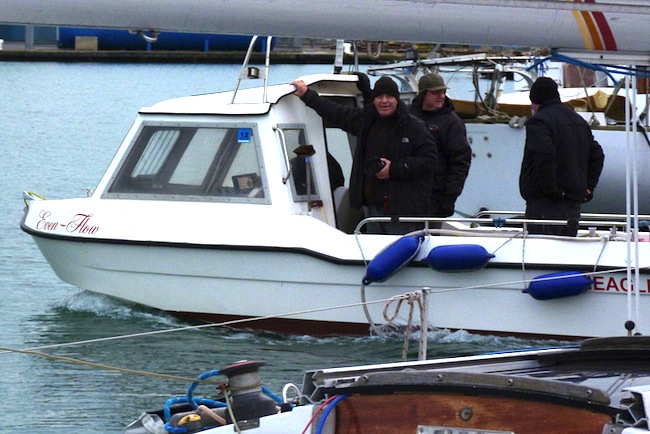
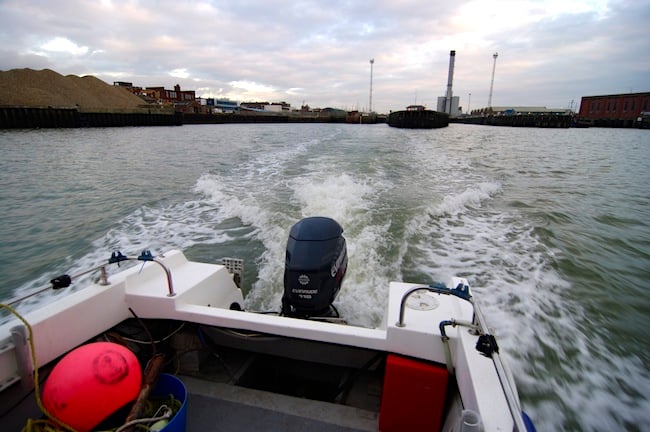
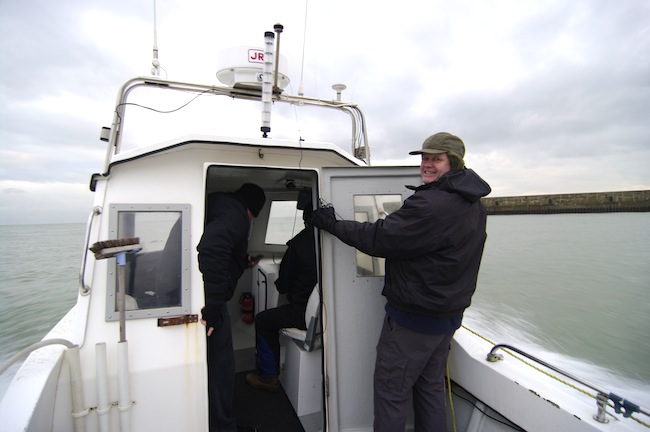
Based on SPEARS' last-known position, and factoring in the wind direction, we sailed in a wide loop in the hope of intercepting the downed rig. The above photos might suggest a calm sea, but further out things got a bit choppy, which seriously affected our chances of spotting anything in the water.
We finally got back to Shoreham after dark, somewhat frozen but satisfied we'd given it our best shot.
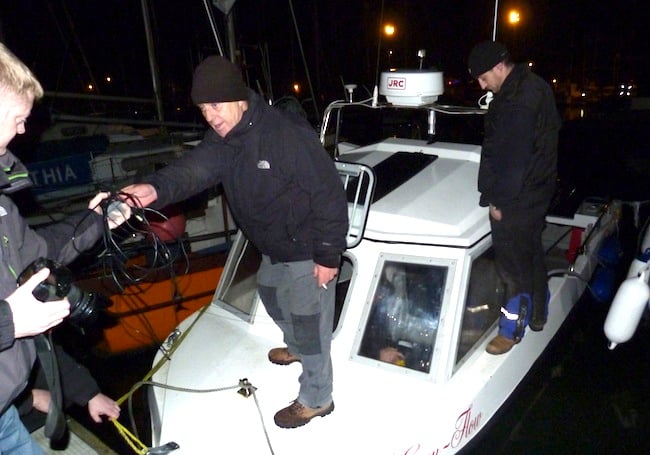
Obviously, we're disappointed at the way the flight panned out, but things don't always go according to plan. While kit can be replaced, and further tests arranged, the loss of our beloved playmonaut is a blow.
Of course, he'd have wanted us to regroup and press forward, which is exactly what we intend to do. In the meantime, we invute you to raise a glass to our diminutive hero. ®
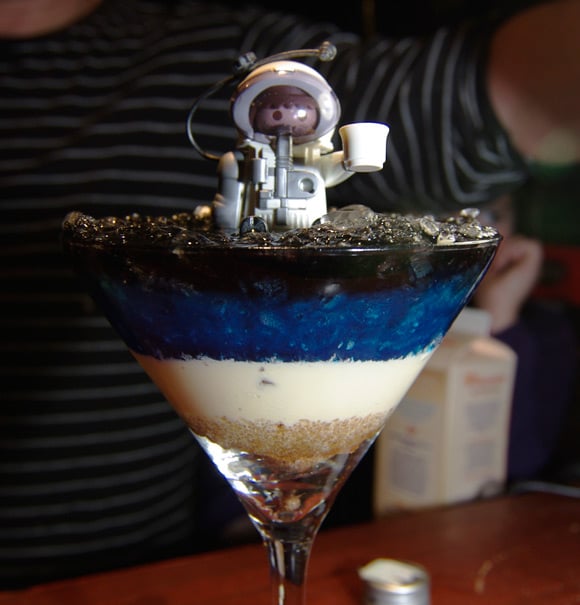
Bootnote
Thanks to patient wives Anita and Julie, hitched to Neil and Dave, respectively, for their help and support on the day. Big round of applause for Julie and her pre-flight bacon sarnies (unsmoked back in a muffin, no butter, choice of brown sauce or ketchup, according to taste).
Further LOHAN resources:
- New to LOHAN? Try this mission summary for enlightenment.
- You can find full LOHAN coverage right here.
- Join the expert LOHAN debate down at Reg forums.
- All the LOHAN and Paper Aircraft Released Into Space (PARIS) vids live on YouTube.
- For our SPB photo archive, proceed directly to Flickr.
- We sometimes indulge in light consensual tweeting, as you can see here.







